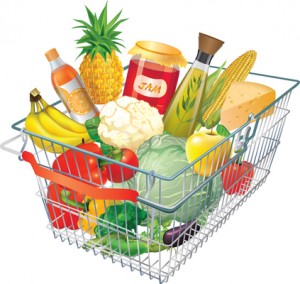A price book, which tracks the lowest prices on the products you buy most often, is the best tool for saving money on groceries and household items. With it, you’ll always know when a sale is really a good deal, when produce is in season, and when to stock up on the essentials. Here’s how to make and keep this time-tested savings tool yourself—and save as much as $1,000 a year.
Why You Should Use a Price Book
Sales on groceries and household items, as you might already know, are cyclical. There are best times of the year to buy groceries (and many other items), but these sales often vary by location. Similarly, while some items are always good to stock up on, you’ll save even more when you know whether to jump on a sale or wait until the price drops even lower. That’s where the price book comes in—it’s a personalized, local guide to the very best deals.
Let’s say you usually buy four cans of a certain type of soup every month, usually for $3.29 a can. Every few weeks, however, the price drops to $2.50 a can. In this example, you’ll save $3.16 each month by waiting for the lowest price. It might not sound like much, but that’s nearly $40 in savings a year, and if you multiply that with dozens of similar items, you can see how the savings add up.
It takes a little effort setting one up and maintaining a price book, but it could make you a more savvy shopper. So here are instructions and a few tips for making your own price book.
 How to Make a Price Book Notebook
How to Make a Price Book Notebook
On each page of a notebook, list an item that you buy frequently (e.g., coffee) and the unit for comparison (e.g., pound). Then, when you shop, list the date, store, product brand, price—and per unit price. After several weeks or months, you should have a lot of data and can use a pencil to circle the current lowest price for reference when you shop.
Spreadsheets: Trent over at The Simple Dollar details how he created a price book in Google Docs. Since it’s accessible from his phone, he says it’s easy to update. His version lists items in the first column—pound of bananas, loaf of bread, gallon of milk—and store names in the other columns, plus a total line at the bottom that adds up the prices for each store. This seems most useful for identifying which store has the best prices for particular items.
Mobile apps: Mobile apps may be the best option, since you’re always going to have your phone with you, and apps contain smart features like highlighting the lowest prices. On iOS, ValueTracker ($0.99), tracks prices over time and tells you the best price point for your various items. You can also use it as a shopping list. On Android, the best app I’ve found is Sharky Shopping (free). It doesn’t have any killer features, like barcode scanning, but is a basic price tracker that lets you input prices by date, store, brand, and size, and it calculates unit prices. For more app suggestions, check out this discussion on TheKitchn.
(Image Source: iCLIPART)


 How to Make a Price Book Notebook
How to Make a Price Book Notebook